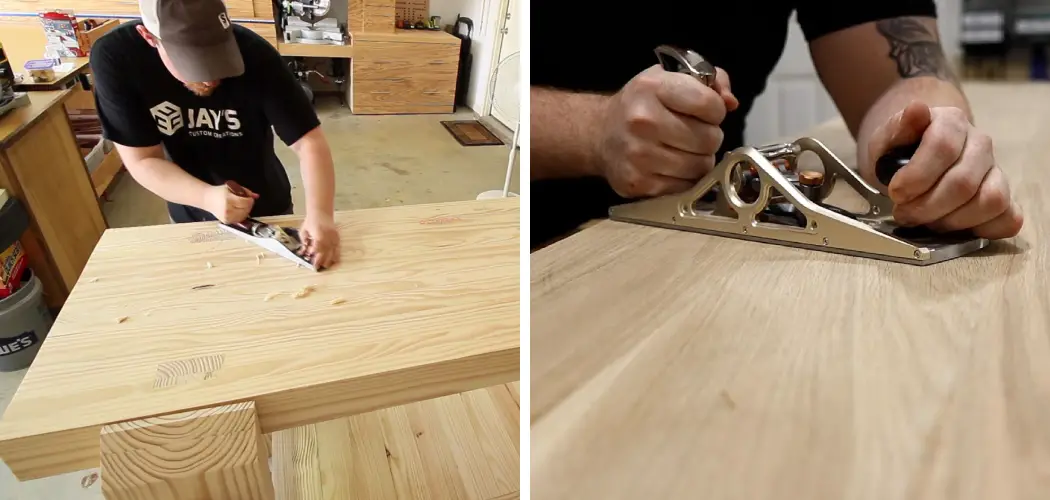Hand planing a tabletop is a traditional woodworking skill that can yield a beautifully smooth and flat surface imbued with a craftsman’s touch. This process involves using a sharp, well-adjusted hand plane to incrementally remove thin shavings of wood, thus flattening and smoothing the surface of the tabletop.
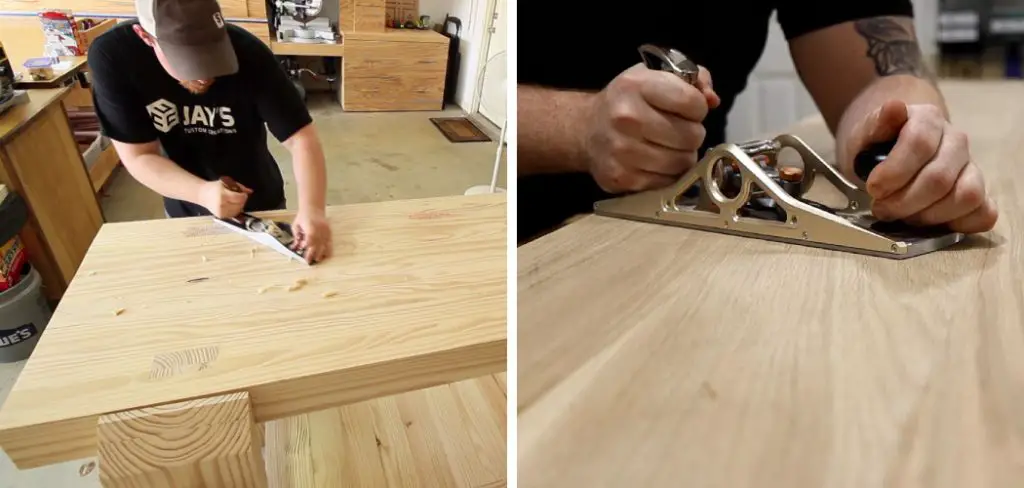
It requires patience, attention to detail, and respect for the wood grain. Throughout this guide on how to hand plane a table top, I’ll walk you through the steps needed to master this classic technique, from the initial assessment of the wood to the final finishing touches, ensuring that even beginners can achieve professional results.
What is a Hand Plane?
A hand plane is a woodworking tool that consists of a sharp blade, known as the iron, attached to a flat base called the sole. The blade is positioned at an angle to the wood surface and can be adjusted to take off thin layers of wood with each pass. This allows for precise control over the amount of material being removed, making it perfect for smoothing and flattening surfaces.
There are several types of hand planes, each with its unique shape and purpose. For hand planing a table top, the most commonly used plane is the bench plane, specifically the no. 4 or no. 5 size. These planes have a longer sole and narrower blades, making it easier to flatten larger surfaces such as a tabletop.
Selecting the Right Wood
Before starting the hand planing process, it’s essential to select the right type of wood for your tabletop. Ideally, you want a dense hardwood like maple, oak, or cherry that is free of knots and defects. The wood should also be dry and stable, with a moisture content of around 6-8%. This will ensure that the wood doesn’t expand or contract after it’s been planed.
Avoid using softwoods or wood with significant defects, as they can be challenging to flatten and may not yield the desired results.
Needed Materials
Hand Plane (No. 4 or No. 5 Bench Plane)
As mentioned earlier, the most suitable hand plane for this task is a no. 4 or no. 5 bench plane. These planes can be found at most hardware stores and range in price from $20 to $200, depending on the quality and brand.
Sharpening Stones
A sharp blade is essential when hand planing, so it’s crucial to have a set of sharpening stones on hand. These can be found at woodworking stores or online and come in various grits, from coarse to fine. It’s recommended to have at least two different grits for optimal results.
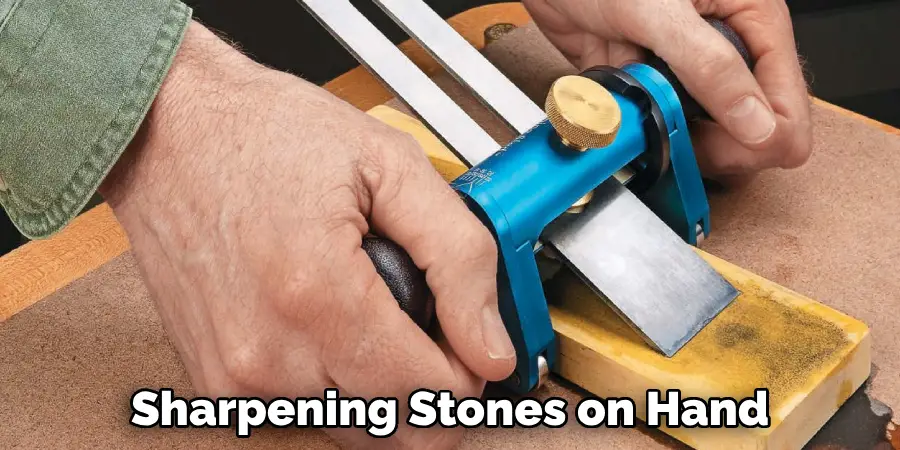
Marking Tools
To ensure an even and consistent plane across the tabletop, you’ll need marking tools such as a straight-edge ruler, a marking gauge, and a pencil. These tools will help you identify high or low spots on the wood surface.
Protective Gear
Hand planing involves using sharp blades, so it’s essential to protect yourself by wearing safety glasses and gloves. This will prevent any potential injuries from occurring.
10 Step-by-step Guidelines on How to Hand Plane a Table Top
Step 1: Prepare the Work Area
Before starting, make sure you have a clean and stable work surface. This will provide a steady base for your hand plane to glide across. You may also want to lay down a drop cloth to catch any wood shavings. The last thing you want is sawdust and wood chips flying everywhere. You may also want to secure the table top to your work surface using clamps, especially if it’s a large piece of wood. It’s essential to have a stable and secure work area to ensure accuracy.
Step 2: Assess the Wood Grain
The direction of the wood grain is crucial when hand planing. You’ll want to plane along the direction of the grain, also known as “with the grain.” This will make it easier to remove shavings and prevent any tear-out or splitting in the wood. But before you start planing, run your hand across the wood surface to feel for any rough spots or changes in the grain direction. Mark these areas with a pencil as you’ll need to pay special attention to them during the planing process.
Step 3: Set Up Your Hand Plane
Before you start using your hand plane, it’s essential to set it up correctly. Start by adjusting the blade depth using the depth adjustment knob on your plane. You want to remove thin shavings of wood at a time, so start with a shallow cut and gradually increase as needed. Next, tighten the lever cap, which holds the blade in place. Make sure it’s tight enough to prevent any movement but not too tight that it’s difficult to adjust later on. Otherwise, you’ll have to stop and readjust the plane frequently.
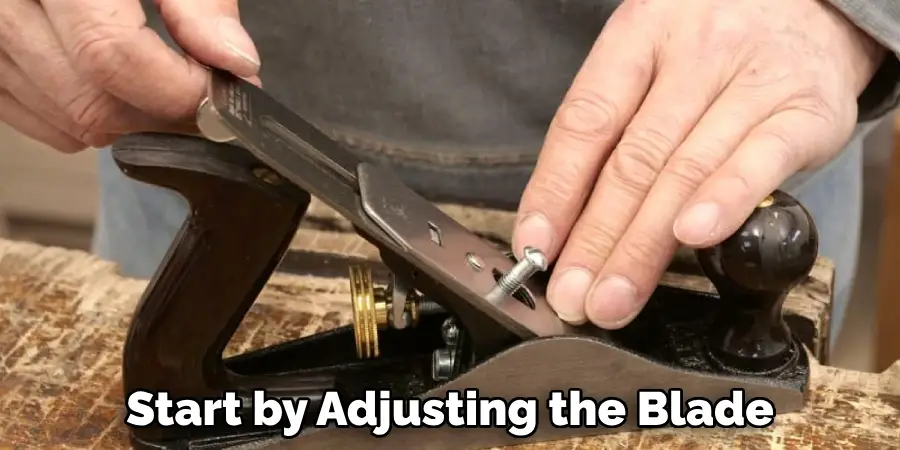
Step 4: Start Planing
With your hand plane set up, it’s time to start planing. Begin at one end of the tabletop and apply gentle pressure on the front knob of your hand plane while pushing it forward. As you reach the middle of the tabletop, release some pressure on the front knob and apply more pressure on the back handle while pulling the plane back towards you. This action will produce a shaving of wood, which will be collected in front of the blade. Continue planing in this manner until you reach the other end. You may need to adjust the blade depth and pressure as you go, depending on the surface of the wood.
Step 5: Check for High Spots
After a few passes with your hand plane, check for high spots on the wood surface. These are areas that haven’t been planed down yet and can be easily identified by running your hand over the wood. Mark these spots with a pencil to remind you to focus on them during the next few passes. You may need to adjust your hand plane or change the direction of your strokes to address these high spots. It’s essential to keep checking for high spots throughout the planing process. It may take multiple passes to achieve a flat and even surface.
Step 6: Plane Across the Grain
After you’ve planed the wood in the direction of the grain, it’s time to plane across the grain. This step is essential for removing any tear-out and achieving a smooth surface. To do this, adjust your hand plane to take a shallower cut and make sure the blade is sharp. Then, planing perpendicular to the grain, make a few passes over the entire surface. This will help level out any remaining high spots and create a smooth finish.
Step 7: Check for Low Spots
After planing across the grain, check for low spots on the wood surface. These are areas that may have been unintentionally planed down too much and are lower than the rest of the surface. Mark these spots with a pencil and make sure to avoid them during the next few passes. The goal is to create a consistently flat and even surface across the entire tabletop. You may need to adjust your plane’s blade depth or direction of strokes to address these low spots. It’s crucial to keep checking for low spots throughout the planing process.
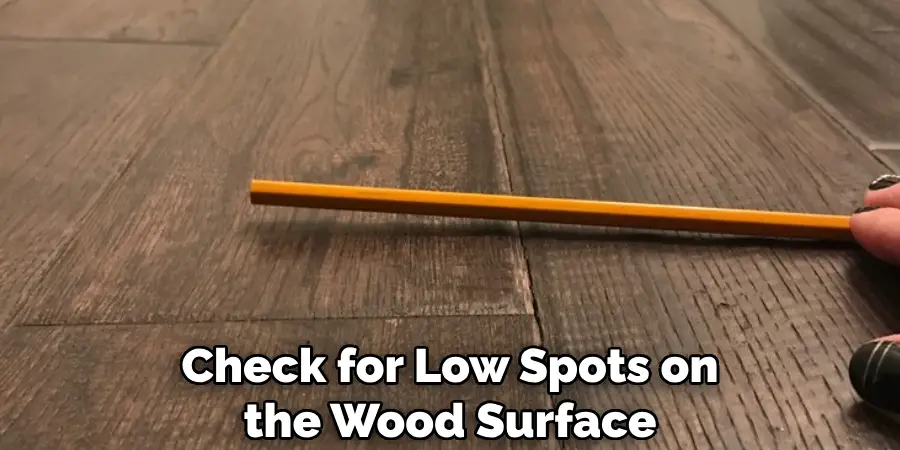
Step 8: Repeat Steps 4-7
Planing a tabletop takes time and patience, so it’s essential to repeat steps 4-7 until you achieve the desired results. It may take several passes to create a flat and smooth surface, especially if the wood is uneven or has a lot of knots. Remember to check for high spots and low spots as you go and adjust your planing technique accordingly. If you’re working with a large tabletop, take breaks as needed to avoid fatigue and maintain accuracy. The key is to stay focused and take your time.
Step 9: Use Sandpaper
After you’ve planed the entire surface of the tabletop, it’s time to smooth out any remaining rough spots using sandpaper. Start with a coarse grit and gradually work your way up to a finer grit for a polished finish. Sanding also helps to remove any remaining pencil marks or imperfections in the wood. You can also use sandpaper to round any sharp edges or corners of the table top for a more finished look. But be careful not to sand too aggressively and undo all your hard work with the hand plane.
Step 10: Clean Up
Once you’re satisfied with the smoothness of your tabletop, it’s time to clean up. Use a brush or vacuum to remove any sawdust and wood shavings from your work area. If necessary, wipe down the surface with a damp cloth to remove any remaining dirt or debris. Now, you can proudly admire your handiwork and use your newly flattened table top for your next woodworking project. Remember, practice makes perfect, so keep honing your hand planing skills for even better results in the future.
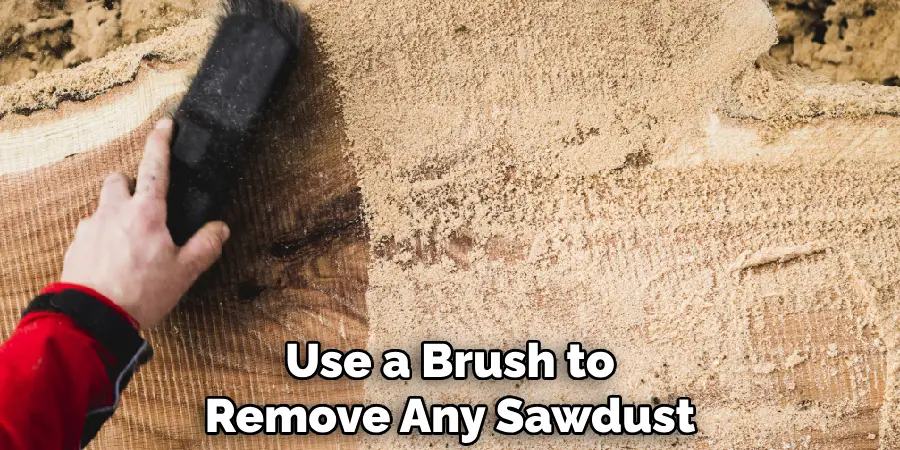
Following these steps and practicing proper hand planing techniques will help you achieve a flat and smooth surface on your tabletop. This skill is essential for any woodworker, as it ensures the accuracy and stability of their projects. So next time you have a piece of uneven or rough wood to work with, don’t hesitate to grab your hand plane and get planing!
Maintaining Hand Planes and Tools
To ensure the longevity and effectiveness of your hand plane, it’s essential to maintain and care for it properly. After each use, clean any sawdust or debris from the plane’s body and blade using a brush or cloth. You can also use compressed air to blow out any fine particles that may be stuck in hard-to-reach areas.
Additionally, regularly sharpening the blade and adjusting the depth is crucial for achieving the best results with your hand plane. It’s also important to store your hand plane in a dry place, away from extreme temperatures or moisture. With proper maintenance, your hand plane will continue to serve as a reliable tool for all your woodworking projects. So make sure to keep it clean and sharp for optimal performance every time.
Troubleshooting Common Hand Planing Challenges
While hand planing is a relatively simple technique, it can present some challenges for beginners. Here are some common problems you may encounter while hand planing and how to troubleshoot them:
Uneven Shavings:
If your plane is producing uneven shavings, the blade may not be set at an even depth across its entire width. To fix this issue, adjust the blade depth by turning the adjusting knob until it’s even on both sides. You can also check for an uneven blade depth using a straight edge or ruler.
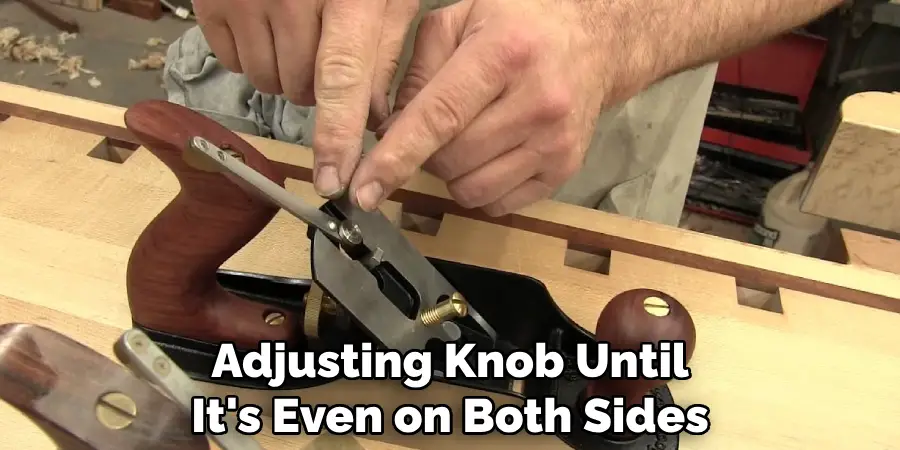
Tear-Out:
Tear-out occurs when the wood fibers are torn instead of being cut cleanly, resulting in a rough surface. This can happen due to dull blades, planing against the grain, or working with unstable or highly figured wood. To minimize tear-out, make sure your blade is sharp and always plane in the direction of the wood grain.
Skewed Cuts:
Skewed cuts happen when the angle of your hand plane isn’t perpendicular to the surface you’re planing. This can result in uneven shavings and a skewed surface. Make sure to check your hand position and adjust the angle of the plane as needed to achieve a square cut.
With these troubleshooting tips in mind, you can overcome any challenges that may arise while hand planing and continue creating beautifully flat and smooth surfaces for your woodworking projects.
Showcasing Exquisite Hand-Planed Table Tops
Hand planing is a skill that has been passed down through generations of woodworkers, and it’s still highly valued and utilized today. There’s something special about the tactile experience of working with hand tools and creating beautiful pieces from raw materials. Many talented woodworkers use hand planes to produce stunning table tops with unique designs and textures. These one-of-a-kind pieces showcase the beauty and versatility of hand planing and add a touch of handmade craftsmanship to any space.
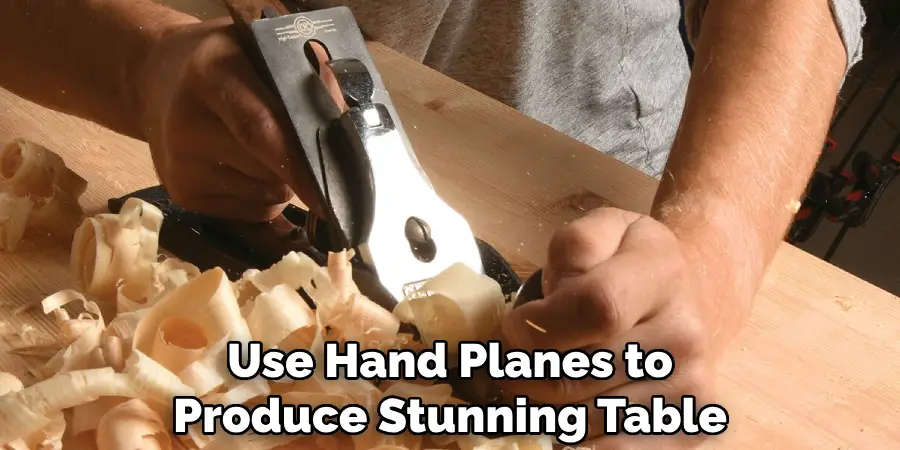
So go ahead and showcase your skills by creating your very own hand-planed tabletop masterpiece! There are endless possibilities for creativity and experimentation when it comes to hand planing, so don’t be afraid to try new techniques and designs. With practice, patience, and attention to detail, you’ll soon be able to create flawless table tops that will impress and inspire others. Happy hand planing!
Frequently Asked Questions
Q: Can I Use an Electric Planer Instead of a Hand Plane for This Process?
A: While an electric planer may be faster, it’s essential to have control over the depth and direction of your cuts when planing a tabletop. A hand plane allows for more precision and is better suited for smaller projects like this. However, some woodworkers may still prefer to use an electric planer for certain tasks. Ultimately, it comes down to personal preference and the specific project at hand.
Q: How Do I Know When to Change the Blade on My Hand Plane?
A: It’s generally a good idea to change the blade if you notice it’s becoming dull or chipped. A sharp blade will make planing easier and produce better results. Additionally, make sure to clean and sharpen your hand plane regularly to maintain its effectiveness. If you’re unsure whether to change the blade, try making a few passes on scrap wood and compare the results.
Q: How Do I Prevent Tear-Out When Planing Across the Grain?
A: To prevent tear-out, make sure your hand plane’s blade is sharp and take shallower cuts. You can also try planing at an angle or using a different type of wood with a different grain direction. If tear-out still occurs, you may need to sand the affected area or switch back to planing in the direction of the grain. With practice and proper technique, you can minimize or even eliminate tear-out altogether.
Q: How Do I Know When My Table Top Is Flat Enough?
A: It’s essential to check for high spots and low spots throughout the planing process to ensure a flat and even surface. You can also use a straight edge or level to visually inspect for any imperfections. Ultimately, it’s up to personal preference and the specific requirements of your project. Keep in mind that some woodworkers may prefer a slightly rustic or imperfect finish on their table tops. The key is to achieve the desired results for your specific project.
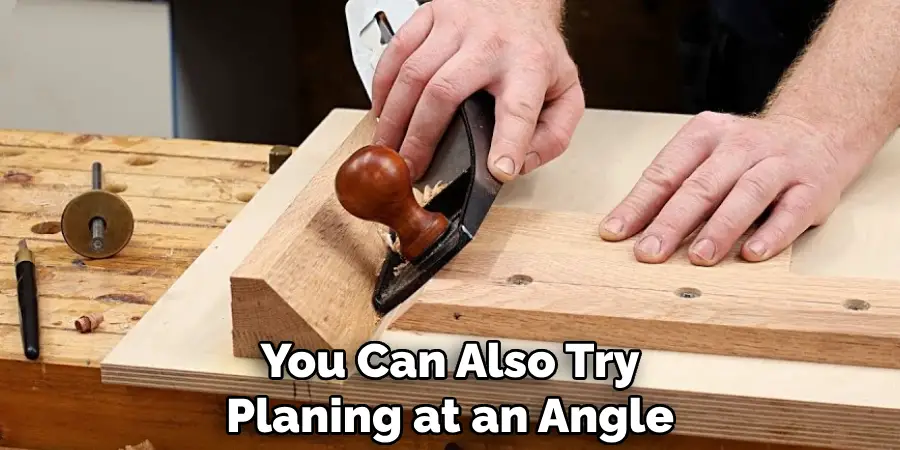
Conclusion
Mastering the art of hand planing a tabletop is a rewarding endeavor that not only enhances your woodworking skills but also connects you to the time-honored traditions of craftsmanship. With the right tools, a bit of practice, and a mindful approach, you can turn a piece of rough lumber into a work of art. Remember to work with the wood grain, take your time, and savor the satisfaction of transforming a raw material with your hands.
The result will be a tabletop that not only looks beautiful but also carries the mark of your personal handiwork, a testament to the value of patience and precision in the craft of woodworking. Thanks for reading this article on how to hand plane a table top.

